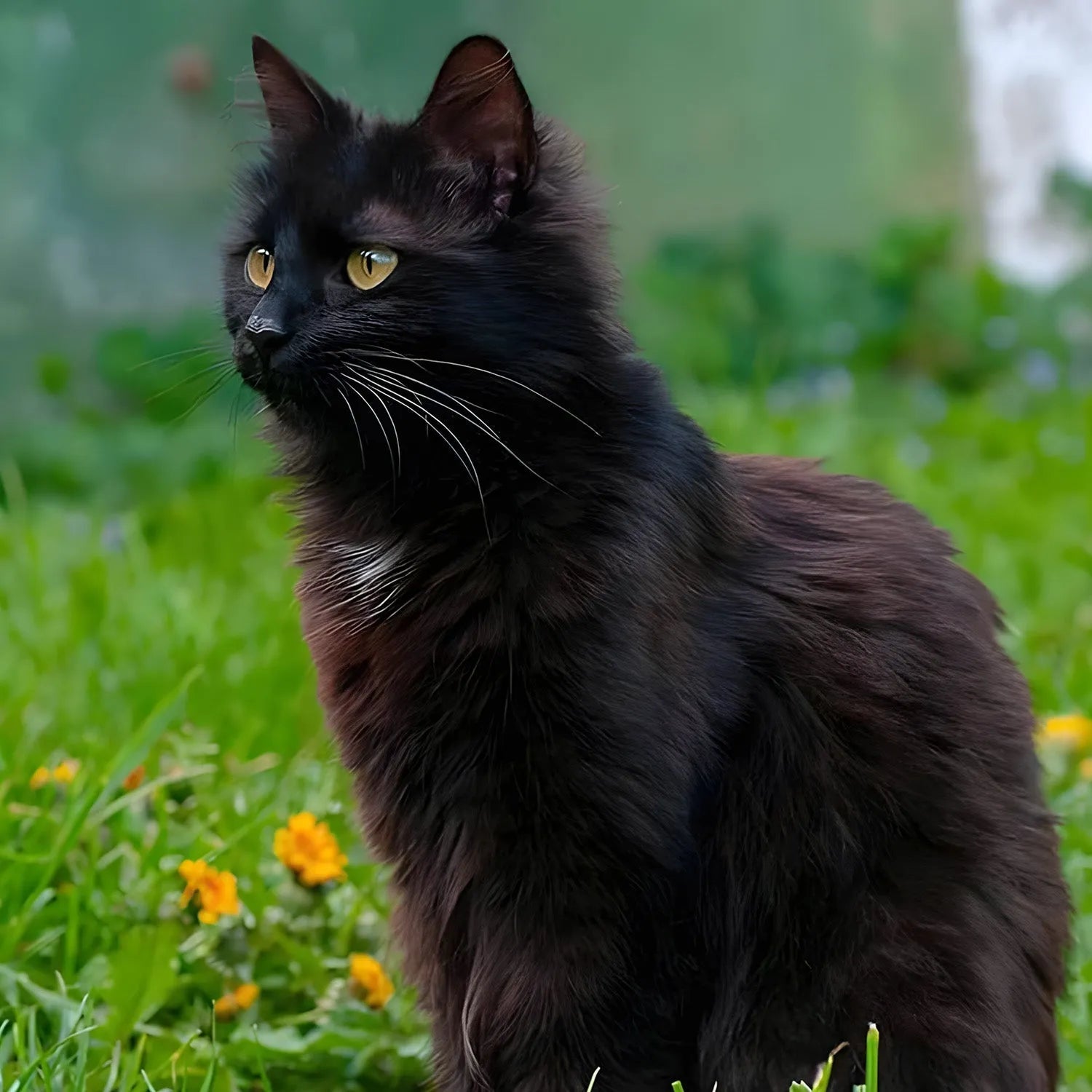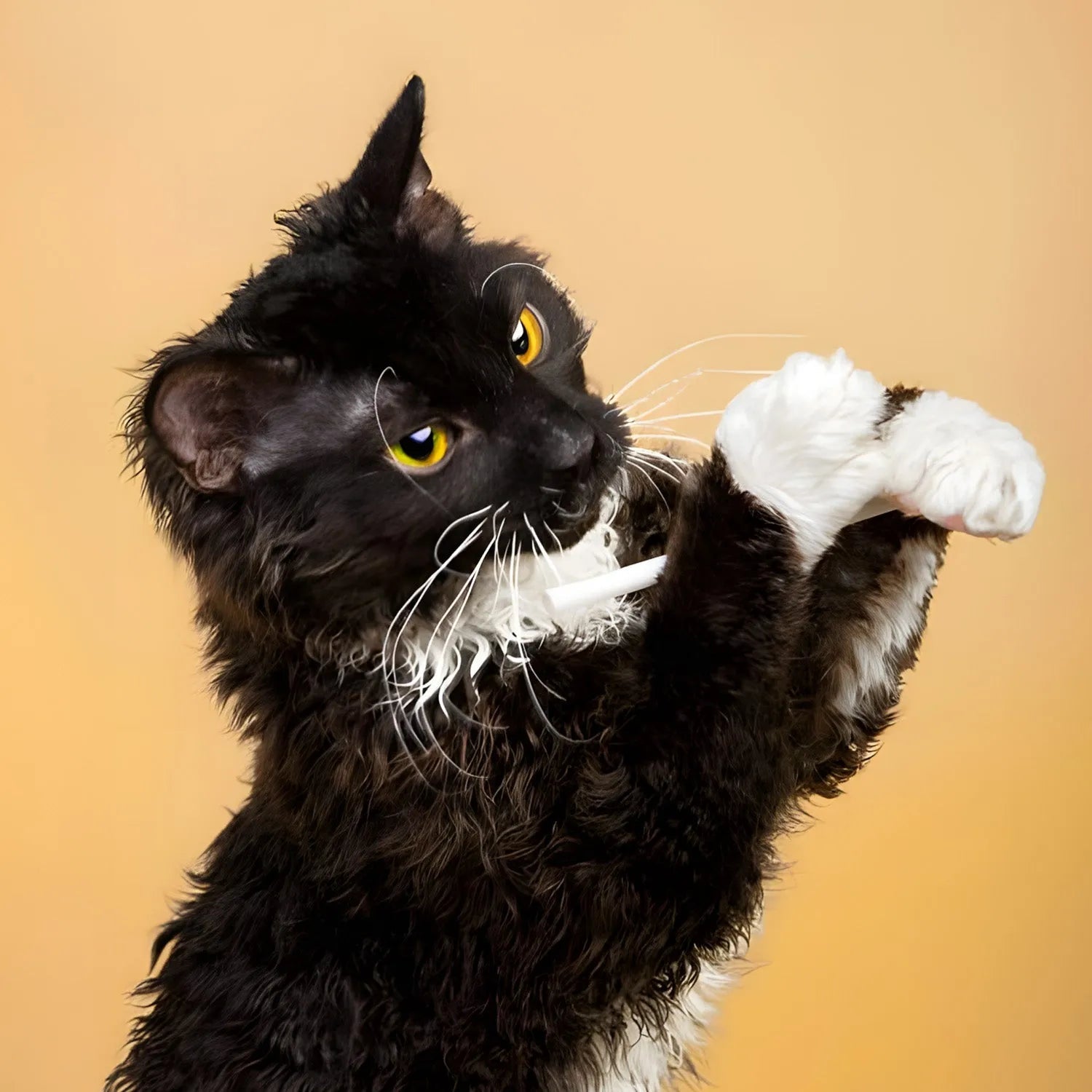Ragdoll: The Gentle and Laid-Back Feline Companion
Introduction
The Ragdoll is a large, affectionate cat breed that is famous for its striking blue eyes, semi-long coat, and incredibly gentle personality. Known for going limp like a ragdoll when picked up, these cats are laid-back, friendly, and love to be with their human companions. Their calm and affectionate demeanor makes them the perfect pets for families, individuals, and seniors alike. If you’re looking for a relaxed and loving cat that enjoys cuddles, the Ragdoll might be the ideal companion. In this blog, we’ll explore the Ragdoll’s lifestyle, behavior, grooming needs, and how it interacts with humans and other pets.
Ratings (1-5)
-
Environmental Adaptability: 4
-
Food Consumption: 4
-
Need for Companionship: 5
-
Trainability: 4
-
Tolerance of Children: 5
-
Ease of Domestication: 5
History and Origins
The Ragdoll breed was developed in the 1960s by a breeder named Ann Baker in Riverside, California. The breed's foundation cat was a domestic long-haired cat named Josephine, who had a calm temperament and produced unusually affectionate kittens. Through selective breeding, Baker created the Ragdoll, a breed known for its docile nature and unique "floppy" characteristic—when picked up, Ragdolls tend to go limp, much like a ragdoll, hence their name.
Ragdolls were first recognized by cat associations in the 1970s and have since gained popularity worldwide due to their gentle and loving nature. Today, they are one of the most sought-after breeds, known for being perfect companions for families and individuals alike.
Physical Characteristics and Colors
Ragdolls are large, muscular cats with semi-long coats and striking blue eyes. They have broad chests, sturdy legs, and long, bushy tails. Despite their size, Ragdolls are known for their soft, silky coats, which can come in a variety of colors and patterns, including:
-
Colorpoint: The face, ears, paws, and tail are darker than the rest of the body.
-
Bicolor: Similar to the colorpoint but with additional white on the face, chest, and legs.
-
Mitted: Like the colorpoint, but with white "mittens" on the front paws and white boots on the back paws.
Ragdolls typically come in seal, blue, chocolate, and lilac colors, with various patterns, including tabby, tortoiseshell, and lynx point. Their most notable feature, however, is their captivating blue eyes, which are large, oval-shaped, and give them a striking, expressive look.
Lifestyle and Behavior
Ragdolls are known for their calm, gentle, and laid-back temperament. They are often described as "puppy-like" because of their tendency to follow their owners around the house, seeking attention and companionship. Ragdolls are highly affectionate cats that love to be around their human family members and are perfectly content to sit in a lap, snuggle in bed, or simply relax by your side.
Despite their relaxed demeanor, Ragdolls do enjoy interactive play, especially when it involves toys like feather wands, balls, or laser pointers. They are not as high-energy as some other breeds, but they do enjoy occasional bursts of activity, especially when it involves their favorite humans. Ragdolls are also known to be very gentle with their claws, making them ideal companions for families with children or elderly individuals.
Trainability and Intelligence
Ragdolls are intelligent cats that can be trained to follow basic commands, perform tricks, and even walk on a leash. They respond well to positive reinforcement techniques, such as treats and praise, and enjoy interactive toys that challenge their minds. While they are not as energetic or quick to learn as more active breeds like the Bengal or Siamese, Ragdolls can still be trained with patience and consistency.
Because of their calm and gentle nature, Ragdolls are less likely to engage in destructive behavior when bored. However, it’s still important to provide them with mental stimulation and interactive playtime to keep them entertained. Training sessions with Ragdolls should be relaxed and fun, as they tend to enjoy learning new things at their own pace.
Social Behavior and Human Interaction
Ragdolls are incredibly social and thrive on human interaction. They form deep bonds with their human family members and are happiest when they can be close to their owners. Ragdolls are not independent cats—they crave companionship and do not do well when left alone for long periods of time. They are known for their loyalty and will often follow their owners around the house, always eager to be part of the action.
Ragdolls are also known for their docile and easygoing nature, which makes them less likely to react aggressively to new situations, people, or other animals. They are very tolerant of being held and handled, and their gentle disposition makes them a great choice for families with children, elderly individuals, or households with other pets.
Compatibility with Children and Other Pets
Ragdolls are excellent companions for children due to their calm and tolerant nature. They enjoy interactive play and are generally very patient with children’s antics, provided they are treated with respect. Ragdolls rarely use their claws in play, making them a safe choice for homes with young kids.
In addition to being great with children, Ragdolls also tend to get along well with other pets, including dogs. Their sociable and adaptable nature allows them to integrate well into multi-pet households, and they often enjoy the company of other animals as much as they do humans. Proper introductions are important, but Ragdolls are generally very accepting of new furry family members.
Grooming and Care
The grooming needs of a Ragdoll are moderate due to their semi-long, silky coat. While their fur is soft and not prone to matting as easily as some long-haired breeds, regular brushing—about two to three times a week—is recommended to keep their coat looking healthy and free of tangles. Use a metal comb or a slicker brush to gently remove any loose fur and prevent knots from forming, particularly around the neck and under the arms.
In addition to regular brushing, Ragdolls require routine dental care, ear cleaning, and nail trimming to maintain their overall health. Despite their luxurious coat, Ragdolls are relatively low-maintenance when it comes to grooming, making them an easy breed to care for.
Health and Lifespan
Ragdolls are generally healthy cats, but like all breeds, they can be prone to certain genetic conditions. Some common health issues associated with the breed include hypertrophic cardiomyopathy (HCM), a heart condition, and polycystic kidney disease (PKD). Responsible breeders screen for these conditions to reduce the prevalence of these health problems.
Regular veterinary check-ups, a balanced diet, and maintaining a healthy weight are essential to keeping your Ragdoll in good health. With proper care, Ragdolls typically live 12-15 years or more, making them long-term companions for any family.
Environmental Adaptability
Ragdolls are indoor cats that thrive in calm, quiet environments. While they enjoy lounging and relaxing, they also appreciate interactive play and mental stimulation. Ragdolls are adaptable to a variety of living situations, including apartments or larger homes, as long as they have access to cozy spots for lounging and opportunities to interact with their human family members.
Because Ragdolls are not very streetwise and have a trusting nature, it's recommended to keep them as indoor cats to protect them from potential dangers outdoors. However, if supervised, Ragdolls may enjoy spending time in secure outdoor spaces, such as enclosed gardens or balconies.
Feeding Requirements
A balanced diet is crucial for maintaining the health and energy levels of Ragdoll cats. High-quality cat food that is rich in protein is recommended to support their large size and energy needs. Fresh water should always be available. Because Ragdolls can be prone to weight gain due to their relaxed lifestyle, it’s essential to monitor their food intake and provide them with regular exercise.
Consult your veterinarian for specific dietary recommendations based on your cat's age, weight, and health needs. Avoid overfeeding, as Ragdolls can be susceptible to obesity if their diet is not properly managed.
Conclusion
The Ragdoll is a gentle, affectionate breed that brings love, companionship, and tranquility to any home. Their calm and easygoing nature makes them perfect for families, singles, and seniors alike. If you’re looking for a relaxed and loving cat that enjoys being by your side and offers endless snuggles, the Ragdoll is the perfect fit.
For more information about other cat breeds and pet care tips, stay tuned to our blog!
References:
1.Davis, M. (2021). "The Gentle and Affectionate Ragdoll Cat." *Journal of Feline Studies*, 35(3), 215-230.
2.Thompson, A. (2020). "Caring for Your Ragdoll Cat: A Comprehensive Guide." *Cat Lover’s Magazine*, July issue, pp. 25-33.
3.Harris, E. (2019). "Health and Wellness in Ragdoll Cats." *Veterinary Journal*, 79(2), 123-137.


